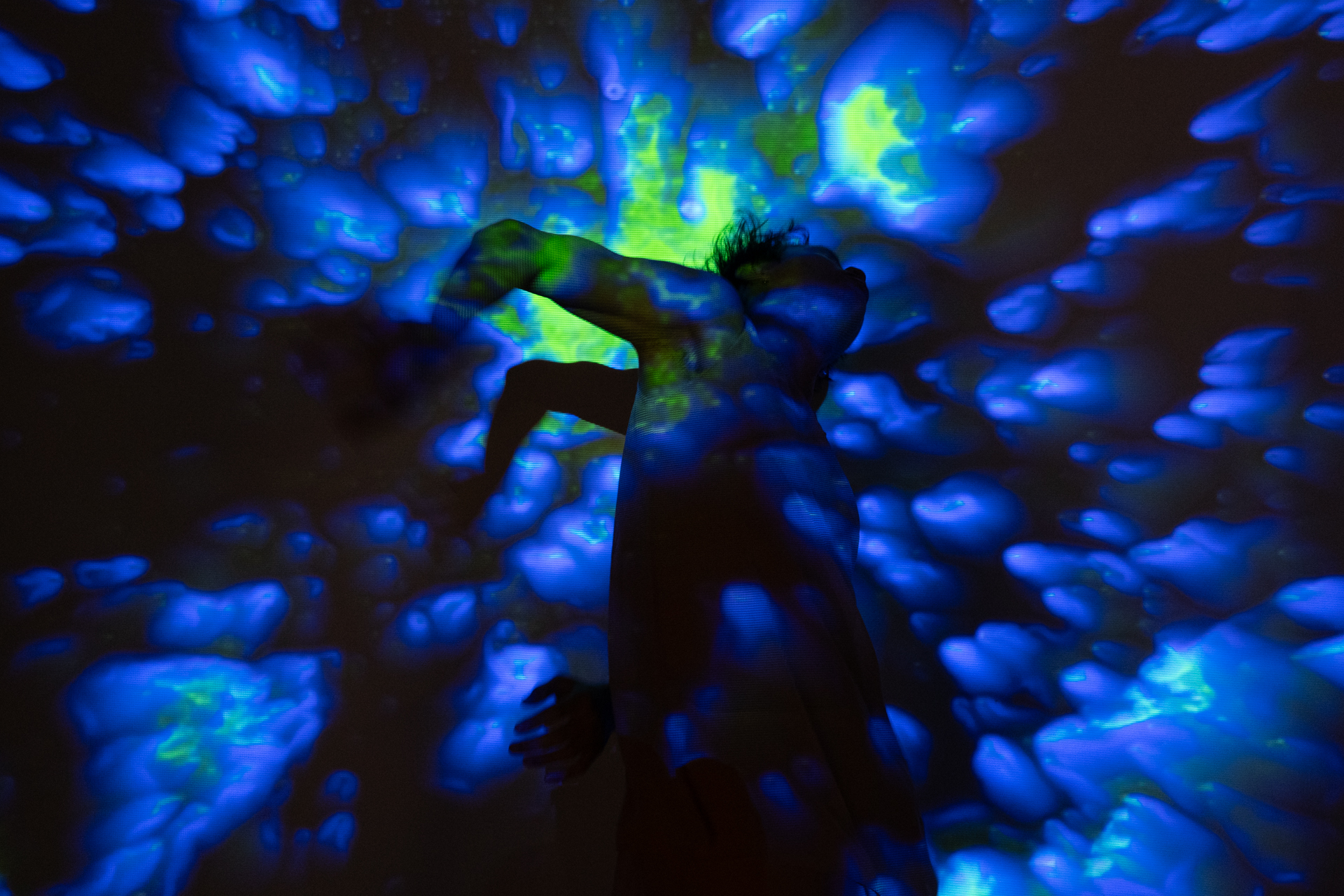TrótTin_AI / TrustIn_AI

︎︎︎
Interactive-Sonic Installation
Intervention performance:
Lyon Đạt Nguyễn
Sound composer:
Edoardo Micheli
Motion Designer:
Unaporn Kitcharoenwong
Documentation:
Esra Sakalli (Berlin), Ly Lê (Toronto) & Khuê Bùi (Saigon)
Tools: AI -Text-to-Image Generators AI-Image-to-Image Generators
2023-24
Intervention performance:
Lyon Đạt Nguyễn
Sound composer:
Edoardo Micheli
Motion Designer:
Unaporn Kitcharoenwong
Documentation:
Esra Sakalli (Berlin), Ly Lê (Toronto) & Khuê Bùi (Saigon)
Tools: AI -Text-to-Image Generators
(NotionAI, Bing Chat AI, ChatGPT) and
(Dall-E 2, RunwayML)
2023-24

Algorithms can be biased in several ways. AI systems learn to make decisions based on training data, which can include biased human decisions or reflect historical or social inequities. This can lead to the perpetuation of biases in decision-making. [1]
When carnival rituals represent the crowning and subsequent de-crowning of a king/queen/power upholder, does AI represent a crowning of power? Most of our searches, conversations, secrets, hopes, needs, and worship might start with a question to AI. The work "TrótTin_AI" (TrustIn_AI) aims to question the trustworthiness of AI, It asks whether we can trust AI as much as we question the trustworthiness of our ancestors' beliefs, customs, and traditions. For example, in Vietnam, ancestor worship involves believing you can communicate with ancestors through a third-party fortune teller. [2]
By drawing parallels between AI and traditional beliefs, "TrótTin_AI" prompts reflection on the potential biases of algorithms and their impact on the news and resources with which humans converse. Using various AI image and text generators and Touch Designer, the installation detects human bodies and generates a projection mapping display featuring abstract forms based on a particular dataset. This dataset on the themes of human beliefs, carnivals, and festivals generates horizontal, adaptable words, ideas, thoughts, and feelings without any hierarchical structure. "TrótTin_AI" aims to blur the line between the physical and digital worlds, creating an entertaining and thought-provoking experience that encourages dialogue around the carnival theme.
Participants can engage with the installation directly and personally by sharing or performing personal gestures of offerings, worship, or other customs they practice, along with their experiences. This engagement fosters a closer understanding of the relationship between AI and human beliefs, encouraging reflection on the ways in which these two seemingly disparate entities can interact.
When carnival rituals represent the crowning and subsequent de-crowning of a king/queen/power upholder, does AI represent a crowning of power? Most of our searches, conversations, secrets, hopes, needs, and worship might start with a question to AI. The work "TrótTin_AI" (TrustIn_AI) aims to question the trustworthiness of AI, It asks whether we can trust AI as much as we question the trustworthiness of our ancestors' beliefs, customs, and traditions. For example, in Vietnam, ancestor worship involves believing you can communicate with ancestors through a third-party fortune teller. [2]
By drawing parallels between AI and traditional beliefs, "TrótTin_AI" prompts reflection on the potential biases of algorithms and their impact on the news and resources with which humans converse. Using various AI image and text generators and Touch Designer, the installation detects human bodies and generates a projection mapping display featuring abstract forms based on a particular dataset. This dataset on the themes of human beliefs, carnivals, and festivals generates horizontal, adaptable words, ideas, thoughts, and feelings without any hierarchical structure. "TrótTin_AI" aims to blur the line between the physical and digital worlds, creating an entertaining and thought-provoking experience that encourages dialogue around the carnival theme.
Participants can engage with the installation directly and personally by sharing or performing personal gestures of offerings, worship, or other customs they practice, along with their experiences. This engagement fosters a closer understanding of the relationship between AI and human beliefs, encouraging reflection on the ways in which these two seemingly disparate entities can interact.
- Manyika, J. (2022) What Do We Do About the Biases in AI? Available at: https://hbr.org/2019/10/what-do-we-do-about-the-biases-in-ai
- Long, N.T. and Van, V.H. (2020) “Ancestor worshiping beliefs in the beliefs and religion life of vietnamese people: nature, values, and changes of it in the current period,” PalArch’s Journal of Archaeology of Egypt / Egyptology, 17(3), pp. 370–388. Available at: https://doi.org/10.48080/jae.v17i3.92.
Part ofCarnival
of Algorithmic Culture
June 23rd & June 24th, 2023
bodyshop studiosToronto, Canada
Supported by the Canada Council for the Arts
Part of
Vietnam Festival
of Creativity & Design 2023
November 13th-19th, 2023
Hải An Gallery
Hồ Chí Minh City, Việt Nam
December 1st-7th, 2023
Vietnamese Women’s Museum
Hà Nội, Việt Nam